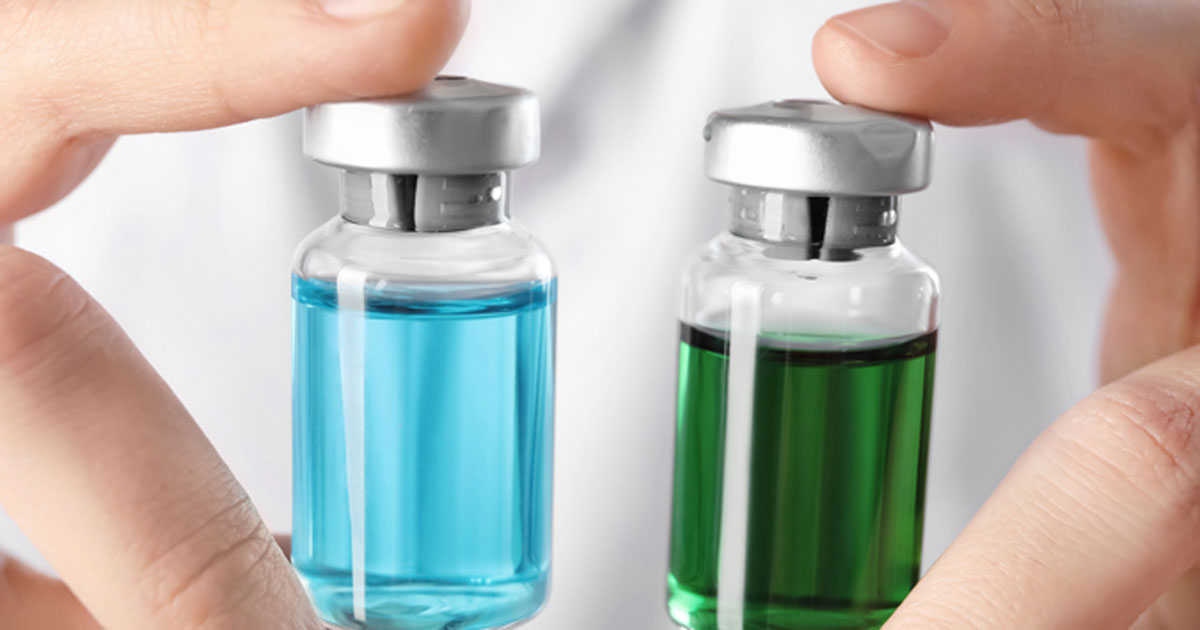Golimumab efficacy maintained through 1 year in AS
Intravenous golimumab, administered in doses of 2 mg per kg, maintained its efficacy through 1 year in patients with ankylosing spondylitis, with no new safety-profile concerns, according to data published in the Journal of Rheumatology.
“Shared decision making with patients can improve treatment satisfaction and is part of the treatment discussion between patients and health care providers,” John D. Reveille, MD, of the University of Texas McGovern Medical School, and colleagues wrote. “Therapies are available with a variety of dosing frequencies and routes of administration, and patients may have preferences related to these factors.”
“In a study of patients with rheumatoid arthritis who were receiving anti-TNF therapy, patients who preferred subcutaneous therapy indicated a preference for self-administration at home, while patients who preferred IV therapy expressed a preference for receiving therapy in the presence of a hospital or physician,” they noted. “Frequency of administration was cited as a preference for patients receiving IV therapy, but not [subcutaneous] therapy.”

To analyze the safety and efficacy of IV golimumab (Simponi, Janssen) among patients with active AS through one year, Reveille and colleagues conducted the GO-ALIVE phase 3 trial, a randomized placebocontrolled study of 208 participants. The researchers randomly selected 105 participants to be treated with 2 mg per kg of IV golimumab at weeks 0 and 4, and then every 8 weeks thereafter through week 52. The remaining 103 participants received placebo at weeks 0, 4 and 12, with a crossover to golimumab at weeks 16 and 20, and then every 8 weeks thereafter through week 52.
Participants who achieved the primary endpoint of improved Assessment of Spondyloarthritis International Society (ASAS20) criteria response at week 16 were further assessed through week 52. Reveille and colleagues assessed efficacy through week 52 using the Ankylosing Spondylitis Disease Activity Score (ASDAS), the Bath Ankylosing Spondylitis Disease Activity Index (BASDAI50) and the Bath Ankylosing Spondylitis Functional Index (BASFI). In addition, health-related quality of life was assessed using the AS Quality of Life (ASQoL) index. Safety was assessed through week 60.
According to the researchers, 73.3% of patients in the golimumab group achieved an ASAS20 response at week 16, compared with 26.2% of those in the placebo group. By week 52, 69.5% of patients treated with golimumab achieved an ASAS20 response, 56.2% demonstrated an ASAS40 response, 56.2% achieved BASDAI50, 24.8% had ASAS partial remission and 25.7% met ASDS inactive disease criteria. Among participants in the placebo-crossover group, 65% achieved ASAS20, 51.5% met ASAS40, 55.3% achieved BASDAI50, 24.3% achieved ASAS partial remission and 26.2% met ASDAS inactive disease criteria.
Mean changes in BASFI and ASQoL scores from baseline to week 52 were similar between both groups.
Regarding safety, 55.4% of patients treated with golimumab experienced one or more adverse events through week 60, with 3.4% having at least one serious adverse event.
“The totality of the results of the GO-ALIVE study demonstrated that treatment with IV [golimumab] 2 mg/kg at weeks 0, 4 and every 8 weeks thereafter was effective in reducing the signs and symptoms of AS among adult patients with active disease despite treatment with NSAID, with sustained response through 1 year,” the researchers wrote. – by Jason Laday
Disclosures : Reveille reports consulting fees from Eli Lilly, Janssen, Novartis, Pfizer and UCB, as well as a research grant from Janssen, and that he has been a trial investigator for Janssen and Eli Lilly. Please see the full study for additional authors’ disclosures.
